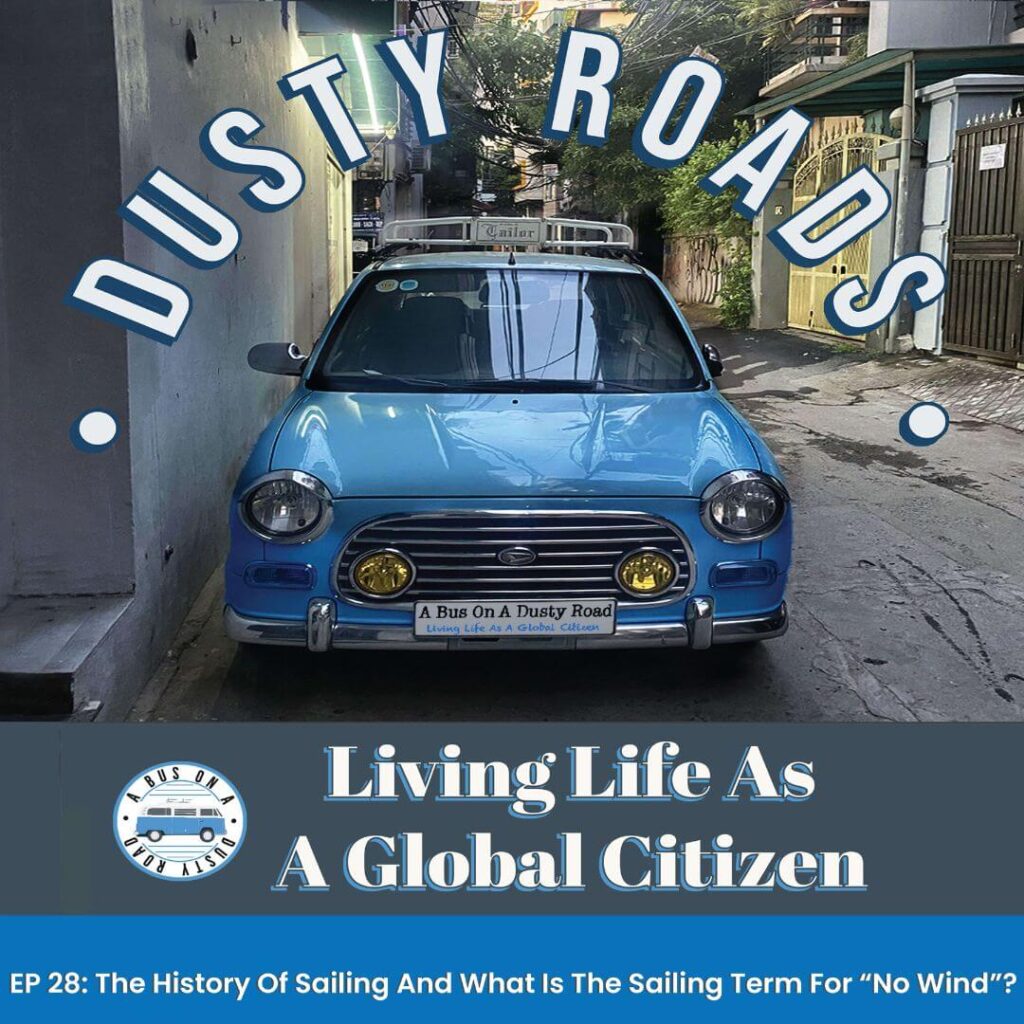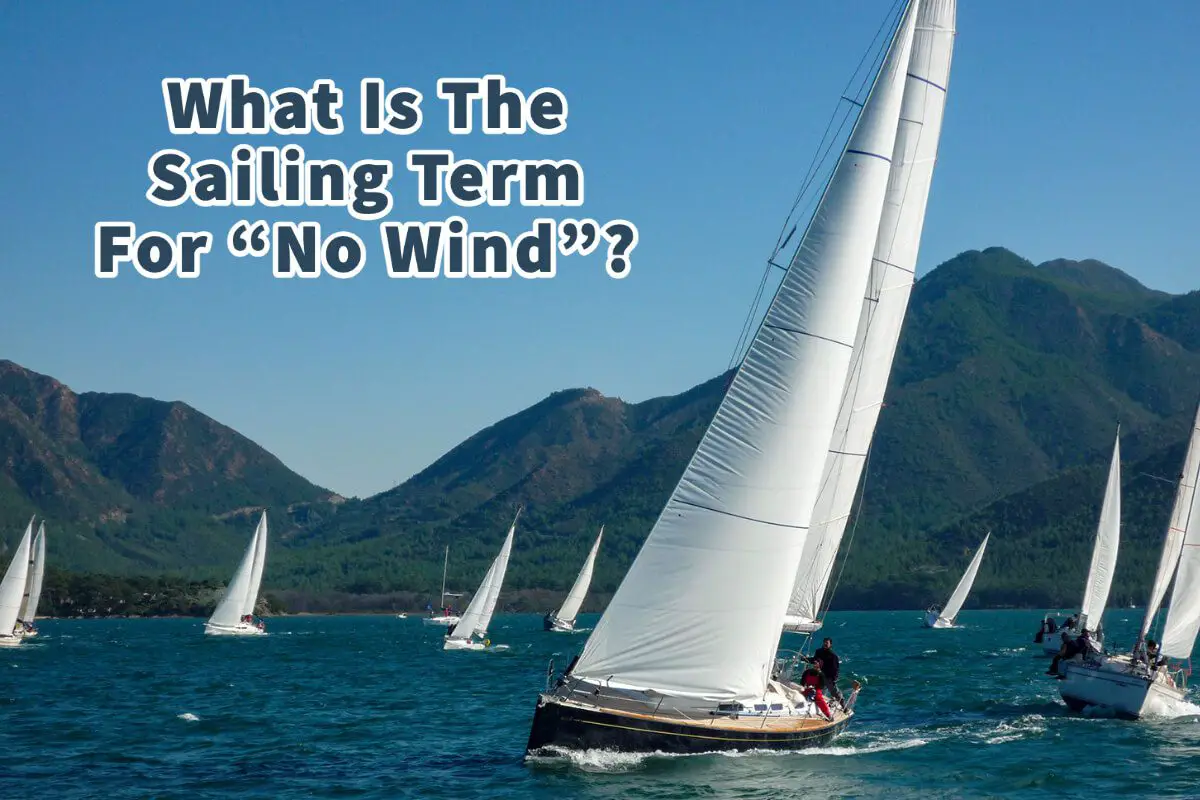When you are learning to sail a boat, one of the most important things you need to understand is what direction the wind is coming from and how the wind and sails work together.
Calm or becalm is used to describe sailing with no wind; they indicate that the wind is calm or becalm, so you can not sail the boat. In ancient times, the sailors also used the word “tide over” to indicate that there was no wind; the sailors would say they were “tide over” or stuck without being able to sail.
Table of Contents
- Becalm And Calm Is Used As A Sailing Term For No Wind
- “Tide Over” The Ancient Sailing Term For No Wind
- About Sailing In Light Wind
- Frequently Asked Questions
- Related Questions
Becalm And Calm Is Used As A Sailing Term For No Wind
The word becalm you might hear to refer that there is no wind to sail. “The calm” means that the wind is calm or there is no wind blowing.
Dictionary.com defines Becalmed as:
“to deprive (a sailing vessel) of the wind necessary to move it; subject to a calm:
Dictionary.com
The schooner was becalmed in the horse latitudes for two weeks
For this definition, we learn that the word becalm specifically refers to when a sailboat does not have enough wind to move it forward; that is where we also get the term calm. We may also say that the wind is calm.
For example, we will use the word calm to say:
- Still or nearly still, i.e., a calm sea.
- Not windy or stormy, i.e., a calm day
These also indicate that there is no wind, and the sailboat can not go forward without wind.
Calm and becalm both mean there is no wind, usually under 1 knot, so it is challenging to sail a sailboat.

Listen To Our Podcast About The History Of Sailing And What Is The Sailing Term For “No Wind”? below or by clicking here.
“Tide Over” The Ancient Sailing Term For No Wind
The traditional sailing term for when there was no wind or there was not enough wind for the sailors to sail would be called “Tide Over.” This term is known to be used as early as the 1600s as a seafaring term.
“Tide Over” was used to show that the wind was absent, so the sailors could not sail their ships. The ancient sailors considered the time and tide similar, so for them, when there was no wind, they were”tide over” or, in other words, unable to move or go forward.
Tide Over was also used as the ships had no wind; the ships were also floating with the tide. When an Ancient sailor said they were “tide over,” they meant the ship had no wind to sail forward and was just rocking with the tide.
About Sailing In Light Wind
It can be challenging to sail a boat in light wind, even more challenging than in heavy winds. Sailing a boat in light winds requires skill to sail and get it moving through the water.
When I was getting my Light Air rating at the Milwaukee Community Sailing Center, some days, the wind was very light, and on others, the wind was hefty. That can be the nature of sailing on a lake like Lake Michigan.
We went out in the very light wind for several days and even had to paddle to help bring the Ensign Keelboat back to shore. (This is why if your sailboat does not have a motor, we recommend you have a paddle in your boat if you need it to get back to shore).
Here are a few things you can do to keep on sailing in the very light wind:
- Keep The Momentum Going – Wind will usually help to beget wind. So do all you can to keep the boat in motion; this will help propel and move forward.
- Know Your Wind Direction – Light wind can sometimes make it hard to know your wind direction, but it is also a great way to learn about wind. When sailing in the light wind, you need to use all the wind you have, so you need to understand your wind direction.
- Keep Wind In Your Sails – Keep the wind in your sails. This is very important as the wind propels you forward when sailing, so keep the wind in your sails.
Mastering how to sail in light or little wind is a skill of sailing. Do not be afraid to go out if there is not much wind. Be prepared if you need to row back to shore and your sailboat does not have a motor that you have a paddle handle in case you need to paddle your way back.
When learning to sail, you must learn to sail in all types of wind. However, it is not always comfortable or even fun to be sailing a light wind. Learning to sail in light wind is also an important skill you need to learn.
Frequently Asked Questions
What is the sailing term for “no wind”?
The sailing term for “no wind” is often referred to as “calm” or “becalmed.”
What does it mean when a boat is becalmed?
When a boat is becalmed, it means that there is little to no wind, making it difficult or impossible to sail.
How does being becalmed affect sailing?
Being becalmed can be frustrating for sailors as it prevents the boat from making any significant progress, and the lack of wind makes it challenging to control the sails and maneuver.
Are there any other terms used to describe no wind in sailing?
In addition to “calm” and “becalmed,” sailors in ancient times also used the term “tide over” to indicate no wind and being stuck without the ability to sail.
Can you sail a boat when it’s becalmed?
It’s very difficult to sail a boat when it’s becalmed because the lack of wind means there is no force to fill the sails and propel the boat forward.
How do sailors cope with being becalmed?
When becalmed, sailors might resort to using oars or other means of propulsion if available. Additionally, they might wait patiently for a change in wind conditions or use any light breeze that might come along.
Is being becalmed dangerous for sailors?
Being becalmed itself isn’t typically dangerous, but it can lead to challenges if the boat becomes stranded in a busy shipping lane or in adverse weather conditions.
How long can a boat remain becalmed?
The duration of being becalmed can vary widely, from a short period of time to several hours or even longer, depending on the weather conditions.
Can modern technology help boats avoid being becalmed?
Modern technology, such as engines, can assist boats in maneuvering and getting out of a becalmed situation. However, the primary reliance on wind for propulsion remains a core aspect of sailing.
How did ancient sailors perceive being becalmed?
Ancient sailors often saw being becalmed as a frustrating and challenging situation, as it could delay their journeys and leave them at the mercy of currents and tides. The term “tide over” reflects the sense of being stuck without wind-driven progress.
At A Bus On A Dusty Road, we talk about everything about culture, travel, life, sailing, and ex-pat living. We are all about “Living Life As A Global Citizen.” We explore social, cultural, and economic issues and travel.
We would love to have you be part of our community. Sign up for our newsletter to keep up-to-date by clicking here. If you have any questions, you can contact me, Anita, by clicking here.
Listen to our Podcast called Dusty Roads. You can find it on all major podcast platforms. Try out listening to one of our podcasts by clicking here.
Subscribe to our A Bus On A Dusty Road YouTube Channel filled with great videos and information by clicking here.
Related Questions
What Is Jibing In Sailing? Steps To A Proper Controlled Jibe
A jibe in sailing is when the boat moves with the stern through the wind. In a jibe, the stern will move through the wind. Like any sailing maneuver, when you have a crew, the helmsman or the captain steering the boat needs to adequately communicate with the crew about what is happening so that they know; this is especially true when jibing.
By clicking here, you can discover What Is Jibing In Sailing? Steps To A Proper Controlled Jibe.
What Is Tacking In Sailing? Steps To A Proper Tack
Tacking is when you move the boat’s bow into the wind to turn the boat’s direction. It is a very common maneuver that all sailors must learn to master. But with any sailing maneuver, their proper steps, you must learn to do a proper and safe tack.
By clicking here, you can discover What Is Tacking In Sailing? Steps To A Proper Tack
What Is “Sailing Into The Wind” Called?
In sailing, the points of sail are No Go Zone, Close Haul, Close Reach, Beam Beach, Broad Reach, and Run. Understanding what each of these means and what position your sail should be in could help you push or pull your sailboat forward.
By clicking here, you can discover What Is “Sailing Into The Wind” Called?

